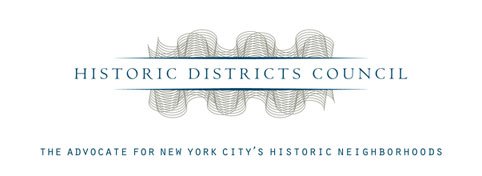December 9, 2024
The Honorable Kathy Hochul
Governor of New York State
New York State Capitol Building
Albany, NY 12224
Re.: New York State Historic Preservation Tax Credit (Click here for a PDF of this letter)
Dear Governor Hochul,
On behalf of the undersigned, a coalition of advocates and practitioners in the fields of historic preservation and affordable housing, thank you for your commitment to historic preservation, affordable housing, and community development projects throughout the state.
Together, we are advocating for important enhancements to the New York State Historic Preservation Tax Credit (NYS HTC) program that will advance the development of affordable housing and community development projects in New York State, while saving the state money. We urge you to include these enhancements to the Historic Preservation Tax Credit in your FY 2025-26 Executive Budget proposal.
The NYS HTC has been an indispensable tool for revitalization in New York State. By incentivizing the reuse of our existing historic buildings, it has encouraged sustainable, environmentally friendly development that has kept valuable building materials out of landfills, strengthened existing walkable communities, reduced greenfield development, and protected our historic buildings and downtowns. Communities throughout New York have used the NYS HTC to transform their Main Streets and downtowns. In Buffalo alone, projects that would not have succeeded without the NYS HTC include the Richardson Complex, Larkinville, Lafayette Hotel, Artspace Buffalo, and the Evergreen Lofts, among many others. It is also a highly effective tool for housing creation: since 2010, the NYS HTC has been responsible for the creation of 29,173 housing units, 15,400 of which are low/moderate income units.
Current New York State law requires the NYS HTC to be allocated in the same manner, and to the same parties, as the Federal Historic Preservation Tax Credit. This required allocation depresses the pricing of both tax credits by limiting the pool of tax credit users. This means less money flowing to important community revitalization and housing projects. As development costs rise, and buildings become more challenging to develop, we need to enhance this important tool now to keep our momentum going. Allowing the allocation of the NYS HTC to investors other than those who are allocated the Federal Historic Credit, or “bifurcating” the credit, would open up and broaden the investor market. The additional step of “certificating” the credit, would further serve to increase the value of the credit, thus injecting more equity into these projects.
Current law also requires projects to be “in whole or in part located within a census tract which is identified as being at or below one hundred percent of the state median family income.” This limitation restricts the ability to access NYS HTCs for many low-income buildings in nearby census tracts that are above the one hundred percent threshold. Accordingly, we support authorizing NYS HTCs to be used for any qualified historic rehabilitation projects, regardless of census tract, provided such projects satisfy the criteria for affordable housing. This simple change would create greater flexibility in the use of NYS HTCs and expand the number of projects that can be rehabilitated for affordable housing.
Enhancing the NYS HTC in this modest yet impactful way would have some big benefits.
More affordable housing. A more flexible program would increase the attractiveness of tax credits amongst new investors who would provide greater private investment dollars in New York State projects.
Less cost to New York State. With greater private investment, New York State will be relieved of the need to add additional public funds to get these projects done.
More money for projects. Credits have reduced value to an investor if they can’t take full advantage of them. We are “leaving money on the table” if credits are used at a reduced cost or not all.
We will be helping the climate. Building demolition and new construction is a major source of greenhouse gas emissions, and it pours tons of materials into our landfills each year. If we incentivize building reuse, we are helping the environment.
Notably, the Assembly and the Senate introduced legislation during the 2024 session (A.9722/S.9071) that would have made the bifurcation and certification improvements discussed above. While the legislation unanimously passed the Senate, it unfortunately did not pass in the Assembly prior to the end of session.
Let’s make these meaningful enhancements to the NYS HTC now and build a better New York one building at a time.
Sincerely,
Adirondack Architectural Heritage, Erin Tobin Executive Director
C.B. Emmanuel Realty, Ben Upshaw Managing Partner
Carmina Wood Design, Steven J. Carmina, AIA President/CEO
Carmina Wood Design, Paul R. Lang, AIA Managing Principal
Common Bond Real Estate LLC, Jason A. Yots, President
Historic Albany Foundation, Pamela Howard, Executive Director
Historic Districts Council, Frampton Tolbert, Executive Director
Historic Ithaca, Christine O’Malley, Preservation Services Director
Home Leasing, Bret Garwood, CEO
Johnson-Schmidt Architect, P.C., Elise Johnson-Schmidt, AIA
Landmark Society of Western New York, Wayne Goodman, Executive Director
Monroe Building LLC, Derek King, Manager
New York Landmarks Conservancy, Peg Breen, President
New York State Association for Affordable Housing, Jolie Milstein, President and CEO
Otsego 2000, Ellen Pope, Executive Director
Preservation Association of Central New York, Andrew Roblee, President
Preservation Association of Central New York, Nicole Fragnito, Executive Director
Preservation Buffalo Niagara, Bernice Radle, Executive Director
Preservation League of New York State, Jay DiLorenzo, President
Preservation Long Island, Tara Cubie, Preservation Director
Preservation Studios LLC, Mike Puma, Director of Technical Services
RUPCO, Kevin O'Connor, CEO
Ryan, Albert Rex, Principal, Tax Credits
Saratoga Springs Preservation Foundation, Samantha Bosshart, Executive Director


















